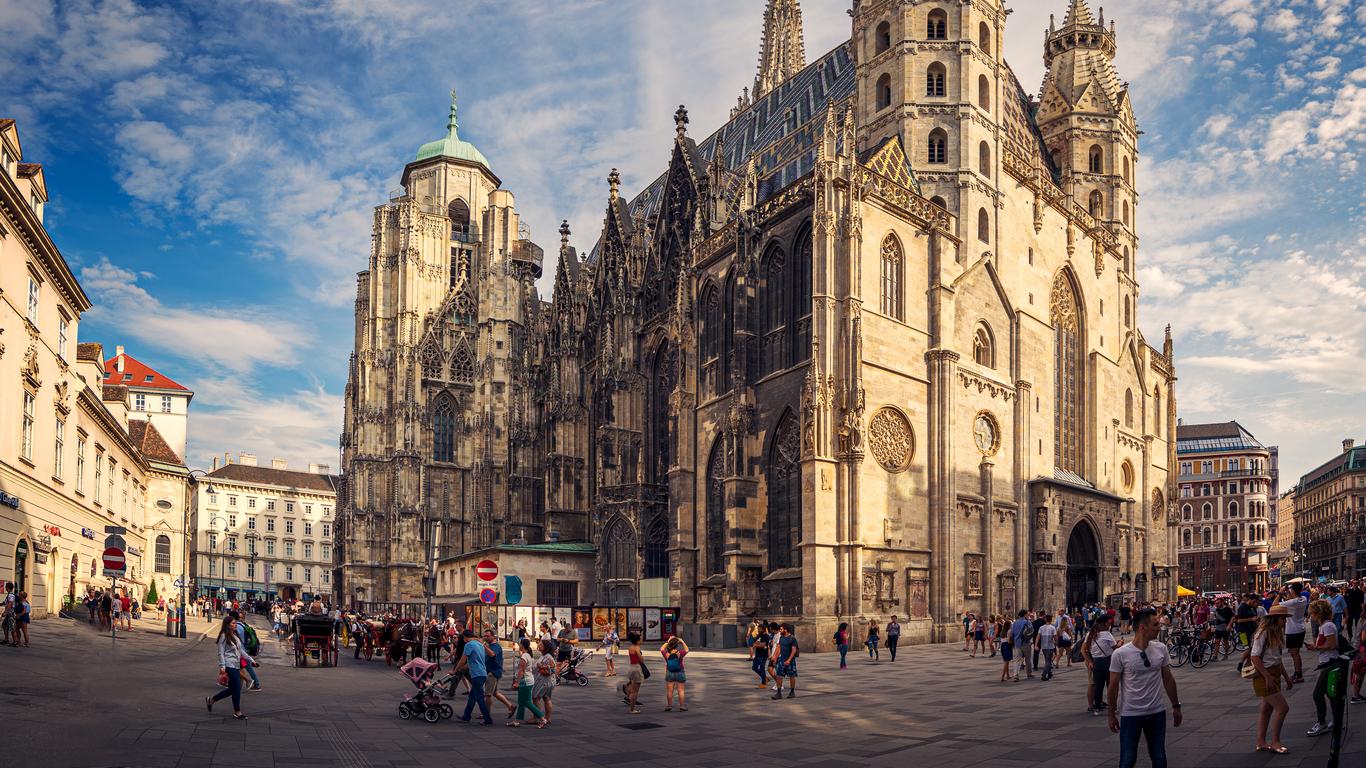With its magnificently decorated, multi-coloured roof and 137-metre high spire soaring above, St. Stephen’s Cathedral is one of Vienna’s most recognisable symbols, representing eight centuries of architectural history. Known locally as Stephansdom, it lies on the edge of Stephansplatz at what is the geographic centre of Vienna.
The cathedral is renowned for its Late Romanesque Giant’s Door, adorned in dragons, birds, lions and demons, as well as its 16th century pulpit which is considered a masterpiece of Late Gothic sculpture. The Organ Case dating to 1513 is also spectacular, with its maker depicted with a compass and set square, as is the red marble Raised Sepulchre of the south choir, featuring a magnificent statue of the Emperor. Visitors can climb the 343 steps up to the Watch Room for outstanding views across the city, then venture down to the Catacombs where the Ducal Vault and Cathedral Treasure can be witnessed. The Heathen Towers and the large gate of Stephansdom are all that remains of its 13th century structure, with Gothic-style reconstructions throughout the 14th century which saw the addition of the Chapels of St. Eligius, St. Tirna and St. Catherine, together with the choir seen today. The following century, the South Tower, noted as one of the most beautiful in Europe, the Nave and Chapel of Barbara were added, although the cathedral was almost destroyed during WWII. It was only through an enthusiastic reconstruction project involving the Viennese citizens that it was restored between 1948 to 1962 to all its glory.
The Cathedral is located right next to the Stephansplatz subway station, which connects with stations across Vienna. It’s also just a short walk from the Hofburg Palace and the sprawling parks of Heldenplatz.
The first Romanesque parish church officially known to stand on the site was completed in 1160, with large expansions and reconstructions over the following four centuries during which time Stephansdom witnessed some of the most important events in Habsburg and Austrian history. In 2000, excavations to install a new heating system revealed numerous 4th century graves, suggesting that an older religious building may have once stood here.





